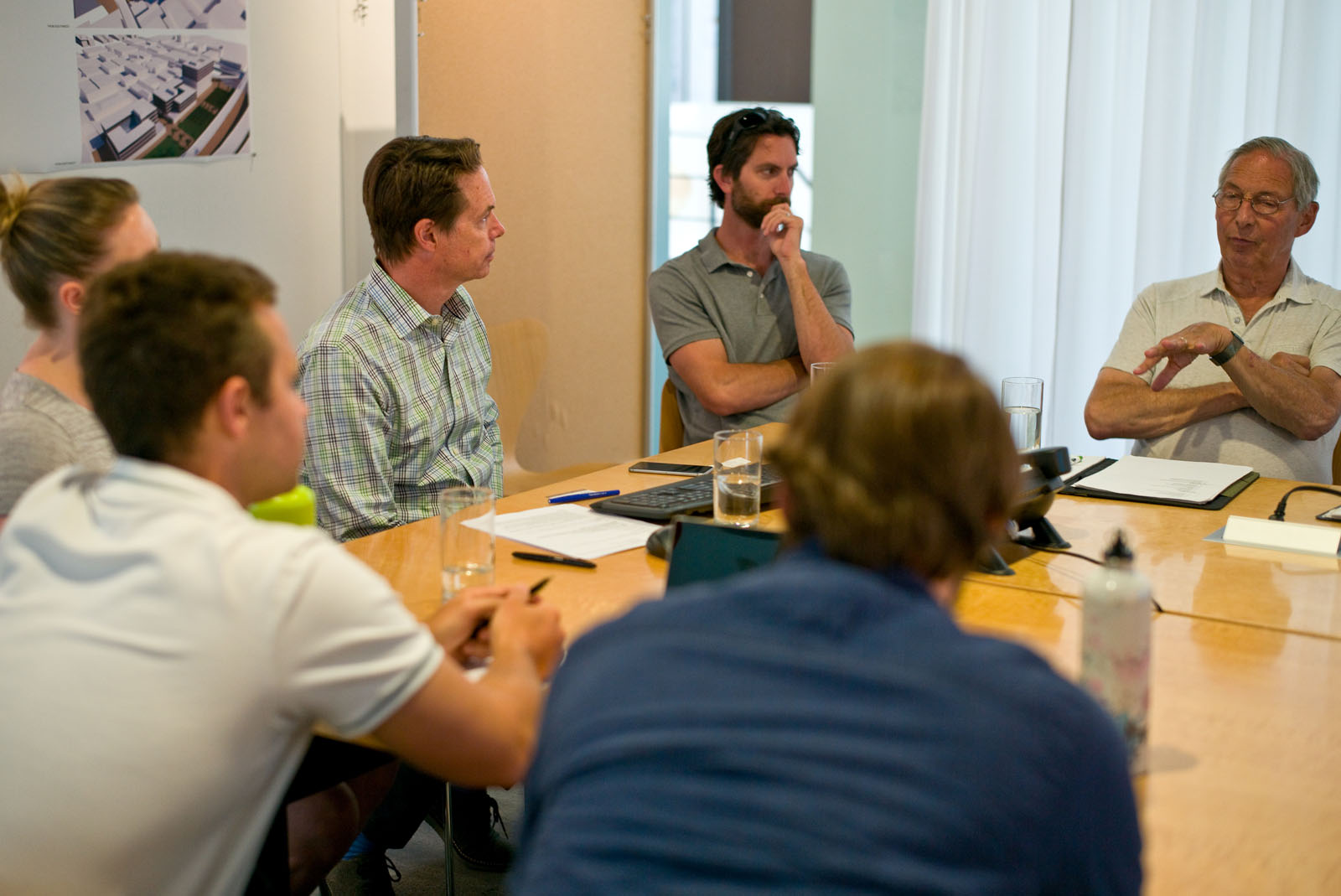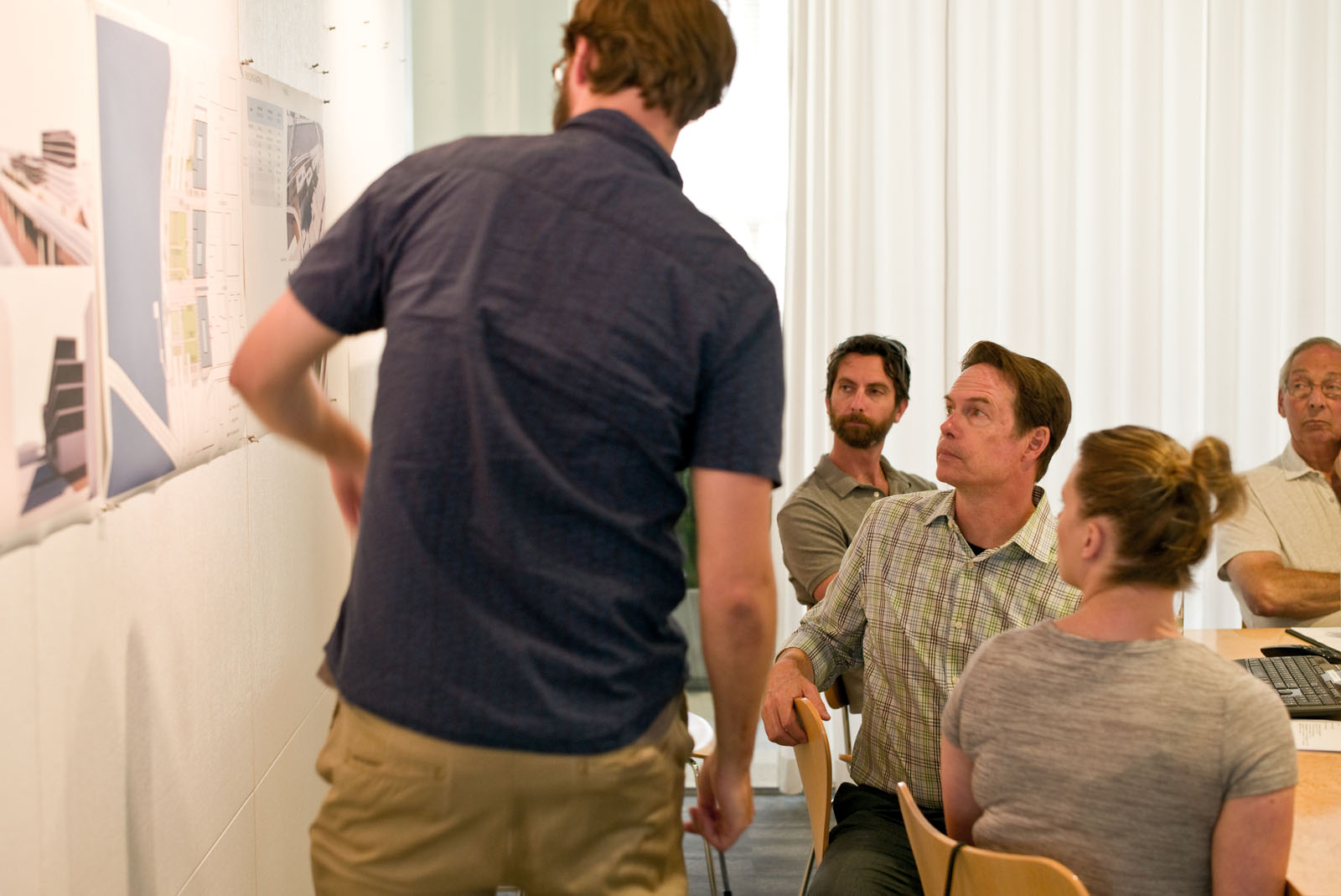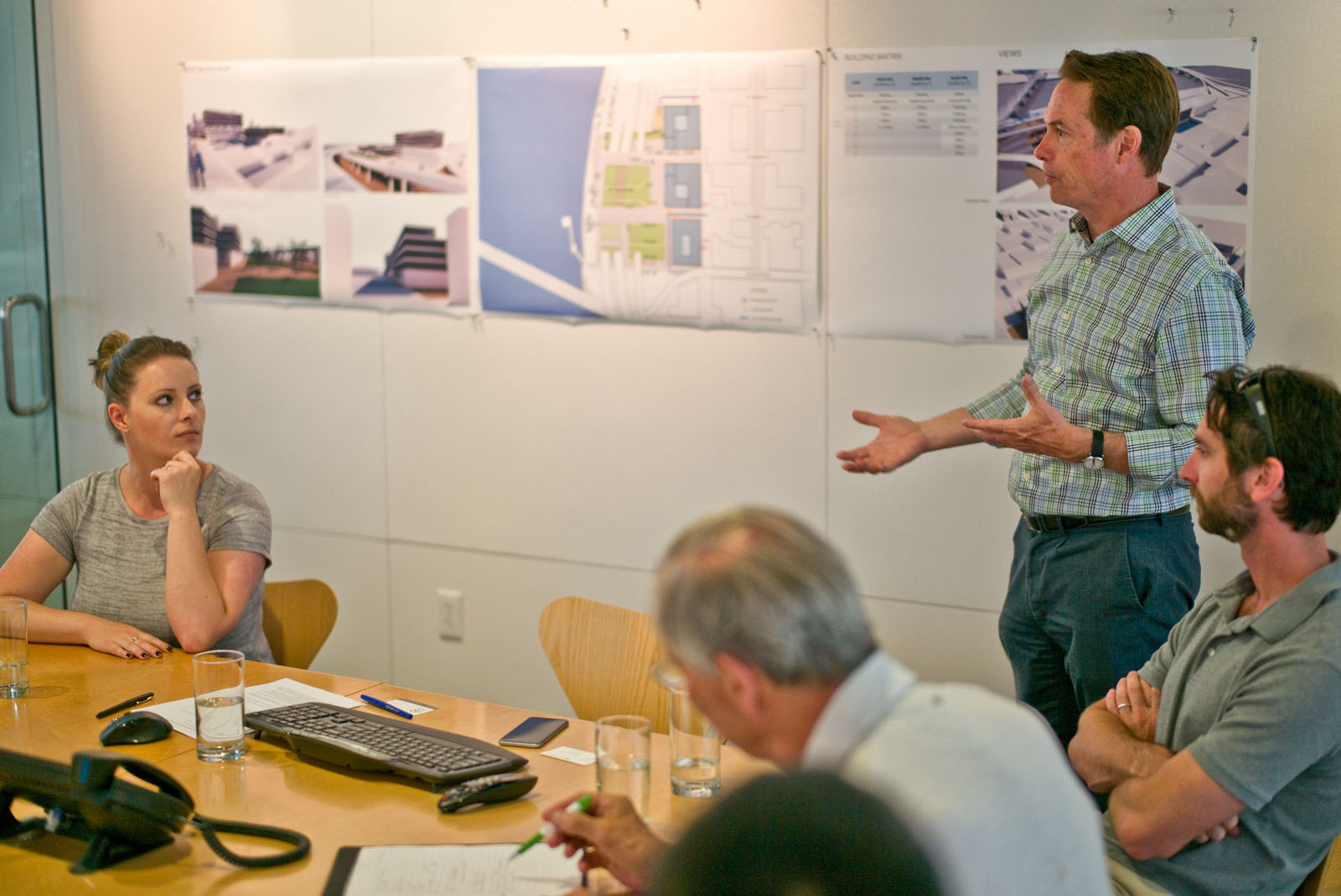





08.11.17
Along with the work we’ve done on their campus, Bora has had the privilege of partnering with Portland State University as an academic and professional resource since 2012. This summer, we committed to acting as architectural consultants/mentors for a studio class in the Master of Real Estate Development program.
The team consists of 6 graduate students, and Professor Vernon Rifer. This quarter, they are looking at the ODOT blocks located at the foot of the Hawthorne Bridge in Portland’s Central Industrial Eastside. It’s a site I’m very familiar with, as it comprises a large portion of Bora’s Water Avenue Yards design research project.
The ODOT blocks act as a gateway to river access on the Central Eastside, and represent an important public opportunity that could easily be overlooked by a traditional development model. For this class, students are acting as developers tasked with producing a concept design, which they will then present to the property owners – in this case, Prosper Portland.
Bora’s role is to act as the “real life” architect, providing design drawings and graphics for the team’s development proposal. In that capacity, I’ve been attending classes every Tuesday and Thursday evening throughout the summer quarter, helping to inform the students’ ideas with Bora’s own extensive site research. Michael Tingley has also offered critiques, and it’s been interesting to see how the students have incorporated our input as their designs progress.
I’ve been learning a lot by approaching this process from the perspective of the students. As architects, it’s rare that we work so closely and collaboratively with emerging professionals in the real estate development field, but I believe this class is reinforcing the importance of a team effort when it comes to shaping our urban environment. This project deals directly with civic space, so I’m hopeful that some of my relevant experiences as a designer will encourage the class to embrace a more socially holistic approach.
Ultimately, this experience has had a real impact on my understanding and appreciation of real estate development. So often, the perception among architects is that developer-driven projects are looking for the cheapest, quickest solutions, with little regard for the future. Thankfully, this class couldn’t be farther from that stereotype. PSU has a wonderful program, and I hope I get the opportunity to work with these new developers on shaping our city sometime in the not too distant future.